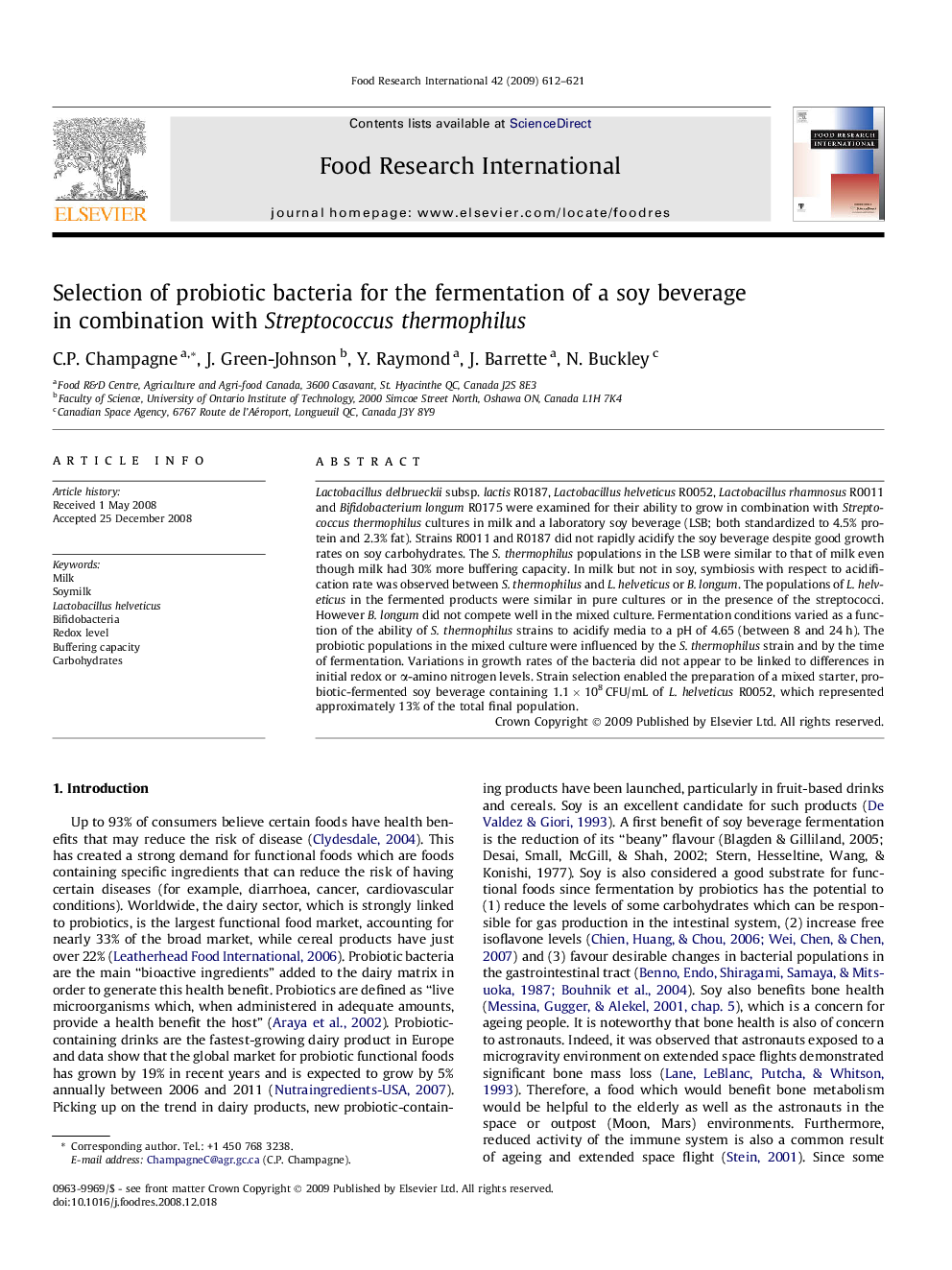| Article ID | Journal | Published Year | Pages | File Type |
|---|---|---|---|---|
| 4562831 | Food Research International | 2009 | 10 Pages |
Lactobacillus delbrueckii subsp. lactis R0187, Lactobacillus helveticus R0052, Lactobacillus rhamnosus R0011 and Bifidobacterium longum R0175 were examined for their ability to grow in combination with Streptococcus thermophilus cultures in milk and a laboratory soy beverage (LSB; both standardized to 4.5% protein and 2.3% fat). Strains R0011 and R0187 did not rapidly acidify the soy beverage despite good growth rates on soy carbohydrates. The S. thermophilus populations in the LSB were similar to that of milk even though milk had 30% more buffering capacity. In milk but not in soy, symbiosis with respect to acidification rate was observed between S. thermophilus and L. helveticus or B. longum. The populations of L. helveticus in the fermented products were similar in pure cultures or in the presence of the streptococci. However B. longum did not compete well in the mixed culture. Fermentation conditions varied as a function of the ability of S. thermophilus strains to acidify media to a pH of 4.65 (between 8 and 24 h). The probiotic populations in the mixed culture were influenced by the S. thermophilus strain and by the time of fermentation. Variations in growth rates of the bacteria did not appear to be linked to differences in initial redox or α-amino nitrogen levels. Strain selection enabled the preparation of a mixed starter, probiotic-fermented soy beverage containing 1.1 × 108 CFU/mL of L. helveticus R0052, which represented approximately 13% of the total final population.
